












MPStubbsintroducespopularConservativeleader
BY JOHN MATHEROpposition leader Pierre Poilievre brought his Axe the Tax campaign to Edmonton March 27 and spoke to more than 3,000 supporters at the Edmonton Expo Centre.
The large crowd, many wearing Axe the Tax t-shirts, were wildly enthusiastic as local area MPs and those hoping to become MPs canvassed among them promoting the benefits of ceasing the carbon tax.

The carbon tax jumped to $80 per tonne from $65 on April 1st resulting in a consumer price hike of about three and a half cents a litre at the gas pump. Other costs will be affected by anything that uses transportation to get it to markets,
as well as the cost of heating oil, natural gas and propane were all set to rise. Before Poilievre took to the stage he was introduced to the crowd by Lakeland MP’ Shannon Stubbs, one of his key Alberta supporters.
She began by stating the Liberal/New Democratic alliance currently holding and maintaining a majority government in Ottawa was a, “cruel, colluding, corrupt and costly” government, a description that garnered cheers and whistles from the crowd.
“It’s great to see so many people here today to send Justin Trudeau a strong message – Canadians cannot afford this Liberal government’s left, right, and centre tax hikes.
“It’s time to bring back some Common Sense leadership with Pierre Poilievre!

“Across the country, we’re seeing huge crowds at events just like this. It’s clear Canadians are fed up with Trudeau’s out-of-touch government and Pierre’s momentum is only getting stronger!
“It’s going to take all of us to take down Trudeau and make sure Pierre Poilievre becomes the next Prime Minister of Canada!”
Besides insisting the tax hike be cancelled, Poilievre, during his 45-minute speech, addressed many of his main talking points.
He talked about building more homes, eliminating the carbon tax, removing vaccine mandates to employ more doctors and nurses, opposing numerous bills such as the Online Harms Act and the "no more pipelines" act, stopping safe supply programs, and more.
A petition by Lamont County ratepayers, requesting an inspection into the governance of the county, was deemed successful by municipal affairs who sent an email to the group that headed up the petition efforts.
Sylvia Holowach and Sada Gagnon said by email they were notified of the minister’s decision on Mar. 28.
“The affirmation of the petition is the culmination of the efforts of many people who organized, collected signatures, and those who signed the petition. It is reassuring to know that all the work and effort was not in vain. When people participate in a democratic process, they are speaking. We
feel our voices were heard,” they said.
“We continue to have faith in the process and are optimistic, as we await the next steps.”
The group shared other results from the email; municipal affairs determined a total population count of 3,754 for Lamont County which meant 751 signatures, 20 percent of the population, were required. The group collected a total of 903 signatures, of which 844 were accepted as valid.
Lamont County communications director Jay Zaal said Reeve David Diduck confirmed receiving a letter from municipal affairs and provided a quote for the Lamont Leader.
“I can confirm Lamont County
received a letter from the Minister. While the petition has been deemed to be sufficient, prior to making a final decision on the request for an inspection, Minister McIver has asked ministry staff to conduct a preliminary review into the concerns raised by the petitioners,” said Diduck through Zaal.
“Lamont County Council and Administration will fully cooperate with ministry staff as required to allow them to complete their preliminary review."
Ratepayers, who have been unhappy with several aspects of the county council, including inflated staffing costs, dishonesty and revised land use bylaws, launched the petition effort
earlier this year attempting to ignite a municipal inspection to investigate.
According to legislation, the group had 60 days to collect their required number of signatures and they did so, submitting it to municipal affairs Feb. 12. Minister Ric McIver appointed Nnamdi Njoku, with the department, as administrator to oversee the sufficiency of the petition which was determined valid on Mar. 28.
In the minister’s email to the petition group, he said a preliminary review of the county will be conducted into the ratepayers concerns prior to determining if a municipal inspection is warranted. There were no timelines given for the preliminary review.
Chipman resident Cindy Lindeman brought an idea forward for a possible village bike park at the Mar. 11 Chipman Village council meeting.
met with enthusiasm from the council members.
“I think it’s a good idea,” said Mayor Morris
Langevin. “That’s something to look at because we do need something, we are getting more kids.”
Langevin said the village’s population has steadily increased in the past while, including several more children.
deputy mayor Shana McIntyre followed up with an estimate of up to 35. “Before, it was maybe three to five.”
The council passed a motion to set up a meeting with Lindeman and Sullivan to discuss logistics of the project. 2
Lindeman distributed computer drawings of what a potential park may look like, complete with dirt hills and wooden bridges to ride over. She said in her hand-out that the idea came while chatting with fellow resident Brian Sullivan.
“Brian and I seem to have had the same vision for the kids. Brian grew up riding on a dirt park with his bike and he has the construction knowledge required in the planning and preparation of a bike track/hills to assist in making something fun for the kids in the village,” she said. Lindeman’s idea was


“Probably just about 20 that moved here from Ont,” he said, which
Lindeman said she wanted to distribute a letter to people in the
area to see who would be willing to help and donate to the project.


I’m close by and ready to help you in your time of need or while planning ahead. Together let’s create personalized arrangements that honour your life’s journey, protect your family and respect your budget. Courtney Chopping Start the conversation today, call 780-472-9019




The Lamont Leader (Lamont, Alberta), Wednesday, April 3, 2024 - 3
At least 45 children explored the halls of the Village of Andrew library and administration building searching for 150 hidden eggs on Mar. 30.
The library’s annual Easter Egg hunt was
spearheaded by librarian Rose Weleschuk who said she looks forward to putting together the event with snacks and crafts in addition to seeing all the children every year.
“We did really well again this year. We had


48 registered and 45 or 46 showed up,” she said, adding she begins planning the hunt in Jan.
“(We hide) 150 eggs and then when they are found, they bring them in and we put them on
the bingo board. (There were also) colouring crafts and free pizza for everyone.”
Village Mayor Barry Goertz said he was happy with the event turnout and sees it as a sign the village is rejuvenating.
“I think (we have) four or five new families that have never been here (before), so it’s growing,” said Goertz.
“I’m pleased with the fact our community is starting to realize what we have an what’s going on, so that is wonderful. Rose does an incredible job of putting this stuff together for our community.”













Well there was an initial shift in the good ship SS Alberta NDP this week, when Rahki Pancholi pulled her hat out of the ring to back former Calgary mayor Naheed Nenshi.
Which in a way is too bad.
She had ideas that separated her from the mainstream socialist herd of Sarah Hoffman or Gil McGowan and would more align her with Kathleen Ganley or Nenshi.
Now both those more progressive rightist NDPers are from Calgary which should tell us all something.
A more centrist Alberta NDP will emerge if there’s a Calgarian at the helm, while the true socialists want to remain with an Edmonton leader.
And truth be told I liked Rahki.
Her campaign showed she had a sense of humour, which I truly appreciate in a campaigner.
You have to be able to state principled ideas and policy, but you should also be able to poke some fun at yourself, because you know your opponents are.
Back in the first week of March just after she announced her candidacy, “The Team Rakhi campaign is in full swing! Rakhi is all about optimism and opportunity. She’s bold, has big ideas, and brings a fresh perspective—and she loves to laugh!,” it read.
The team wanted to know from its supporters what the campaign theme should be and what to put on some stickers.
The suggestions provided were: We will, We will RAK YOU, We are on tRak!, TeamRakhi, Let’s Rak and Roll!
But despite the crafty little slogans it wasn’t to be.
So she threw her support to Nenshi.
Now his nickname in this campaign could well be “No need.”
“Do I really need Edmonton’s support? No need.”
“Will I be able to work with a caucus when I’ve always worked independently? No need.”
“Do I have to know the difference between urban Alberta and the rural areas in order to pick up votes? No need.”
But what caused Pancholi to drop out was that No Need Nenshi has sold volumes of memberships in order to try and secure the leadership currently held by Rachel Notley.




And No need is no Rachel.
How will he deal with Gil McGowan, both as a leadership candidate, but also as a board member of the provincial NDP.
As head of the Alberta Federation of Labour, McGowan will retain his board position win, lose or draw.
But therein lies another issue with the provincial NDP that is escaping much attention from mainstream media.
Is the party actually legitimate?
This question has arisen as the result of a defamation suit filed by former UCP Calgary candidate Caylyn Ford.
Ford has filed a $7.65 million defamation lawsuit against the NDP, her former friend Karim Jivraj, and certain journalists and news outlets for smearing her as a white supremacist during the 2019 Alberta election.
The Alberta UCP saw Ford as a star candidate in the 2019 election, as she was recruited by former premier Jason Kenney to run in Calgary-Mountain View.
Jivraj destroyed her candidacy by planting false stories about her in Press Progress. Edited parts of private philosophical conversations involving her were given to Press Progress, with the NDP saying she was a white supremacist.
She ended up resigning her candidacy to avoid becoming a distraction to the UCP’s



campaign.
Ford said the Alberta NDP does not exist. Its registration as a political party was based on an invalid 1977 trust deed.
The trustee does not exist. Therefore, she did not have anyone to sue.
The Court of King’s Bench of Alberta has ruled the provincial NDP does not have legal capacity for the defamation lawsuit brought against it by Ford.
For the entire time the NDP governed Alberta, it may have been operating with no legal standing. It could commit fraud, defamation or breach contracts and the victims would have no legal recourse.
Its constitution identifies it as a section of the federal NDP. Her lawsuit named the federal NDP. It responded by saying it was not liable for provincial sections.
The federal NDP’s application for summary dismissal has been refused, and the Alberta NDP has 30 days to get its house in order.
So how will this affect the leadership campaign?
Does anyone really want to lead a party that has no legal standing? A party that may have led Alberta for four years with no legal standing.
How does the party explain this mess to the public? The next 30 days could become very interesting. But at least Nenshi can safely say he had nothing to do with it. Maybe not so for Hoffman, Ganley or McGowan.



 BY HAZEL ANAKA
BY HAZEL ANAKA
This week is another random collection of thoughts and impressions.
Due to scheduling problems, the big shindig to celebrate my birthday didn’t happen until Saturday. Hilary and Ash had offered to host it and Roy was prepared to pay for the catering from Yo Baba. I had the easy part. I ironed a few tablecloths that morning and helped a bit in the kitchen. I haven’t yet mastered the art of watching others work and waiting for things to materialize. The group was largely family members, some of whom I haven’t seen in a long, long time. As usual, there were some guests who couldn’t attend and that left a few holes.
Given that it was Easter weekend, it’s not surprising they had other plans.
It was also the first chance many of these
people had to see the new house. Had the weather been a bit less March-like, I’m sure it would have spilled out into the backyard a bit.
The handful of kids were sorely disappointed when the cartoon they were watching was replaced by the Oilers game. (Chalk up another win for the good guys). But the Easter egg hunt was some consolation. I think the decibel level in the house was in part, people’s pleasure in seeing each other and the fact nearly everyone is hard-of-hearing.
In settings like this, I’m always aware of who the great conversationalists are. They are the outgoing ones who can and do talk to anyone; who set others at ease; who notice those who may be feeling left out. Thank goodness for them. Because we have a family wedding this summer, I was able to have my couples meeting right there in the thick of the party. The gifts of flowers, potted plants, a ‘grazing box’, lotions and potions, cash, chocolate, and wine were thoughtful and generous. The honey cake from a Ukrainian bakery was the perfect delicacy
to top off the meal.
Roy, Hilary, and Ash gave me the 8-volume encyclopedia set from UPPERCASE, a Calgarybased publisher of art and graphic design books that are to die for. They will provide weeks of gorgeous eye-candy to drool over.
Easter Sunday morning saw us in church with a potluck lunch to follow. I and two others with March birthdays had the honour of being blessed and treated to the traditional Ukrainian song Many Years. And now, back to the real world.
April 1st marks the next increase of the federal government’s ‘price on pollution’ plan. But, don’t worry your pretty little heads, the rebate will more than cover what you’re paying outof-pocket. Uh-ha. Liberals have begun a series of pre-budget announcements all across the country to prove to us how much they care, how much they feel our pain, and how they will set the world right again. Apparently, the government is still planning their embargoed reading and press conference for accredited journalists in
a locked room with no audio or video recording allowed as is tradition. Pundits wonder if there’ll be anything left to say after two or more weeks of daily announcements. It’s largely viewed as a desperate measure to win back support from a disenchanted electorate eager to see the last of this government.
Somehow, between the work I always have in my studio, we also have to get our act together to file our income tax before the end of April. Oh joy. With a number of appointments—both fun and otherwise---already scheduled, I can see April flying by. With the snow essentially gone, keeners will be out there, cleaning up, raking dead grass, watching for green
shoots to emerge. I just hope the last few bizarre months didn’t winterkill too many trees or perennials. It was hard enough buying and planting them once, never mind having to do it all over again.
The house is beginning to look like a warehouse as I prepare to be a guest seller on a friend’s YouTube Live Sale. I continue to try different configurations of furniture, equipment, and supplies to maximize my space and increase efficiency. When I hand-dye player piano paper rolls with natural dyes, I take over the kitchen. I’m looking for a way to cull my library and recoup some of the investment I’ve made over a lifetime of collecting. I continue to develop a social media
plan. The learning I do daily is, I hope, a safeguard against becoming a boring old woman with dementia and nothing to live for. And yes, I know there are no guarantees for even one’s next breath.
And finally, I read through the survey The Lamont Leader is asking readers to complete. Based on conversations I’ve had with people over the past twenty-five years or so, there is an alarming level of confusion about the parts and purpose of a newspaper. I think the survey document explains the differences in a simple, understandable way and is definitely worth a read. Or better yet, grab this chance to have your say. Or ask some questions. It can only help you and the publication, from where I sit.



Midway through his speech as he railed against the tax, Poilievre pulled Alberta Premier Danielle Smith from the audience to join him on stage.
He called on Smith to join him on stage, asking her if she’d be willing to join his call to all candidates of the Alberta NDP
leadership race to write Justin Trudeau and tell him to ‘spike the hike.’ “100%,” said Smith. “I can’t believe that this city voted NDP with all the Conservatives in this building. But you have the power to call all the NDP leadership candidates and all the MLAs to tell their boss, Jagmeet Singh, in Ottawa that he should axe the tax and spike the hike.”
This Spike the Hike rally was the biggest one
to date, confirmed Poilievre spokesperson Sebastian Skamski, although he commanded a similar turnout when he was campaigning for the Conservative leadership in Edmonton in 2022.
Stubbs said a Conservative government with Poilievre as Prime Minister wouldn’t snub Alberta like the current government does.
“That’s why I feel inspired every day with
at the Bruderheim Memorial Hall, with the dinner being served at 6 p.m.
Week across the country in mid-April.
Volunteers are invited to attend special Volunteer Appreciation dinners throughout Lamont County from April 15 until April 18.
Andrew will host the first dinner April 15 from 5:30 to 9 p.m. with supper beginning at 6 p.m. at the Andrew Hall.
Bruderheim will host its dinner for volunteers April 16 from 5:30 - to 9
Lamont will host the third dinner April 17 at Lamont Hall with the same hours as the previous two events.
Mundare is the site of the final Appreciation week dinner April 18 at the Mundare Recreation Centre from 5:30 p.m. to 9 p.m. with dinner being served at 6 p.m.m
This year Lamont County is bringing in Canadian Mentalist and Edmonton Magician of the Mind Louis Pezzani to perform.
According to posters
for the event, Pezzani “combines psychology, magic comedy, audience participation, and mind blowing mystery to create a rare and unforgettable entertainment experience.”
The poster also points out the show is not hypnotism and no one is made fun of or embarrassed.
Tickets for the evenings at all four communities are free but limited in number.
Available at town offices of Bruderheim, Lamont and Mundare or from the Andrew Lions Club they are available from March 4 to April 7.


him as a leader in the first place. It is because he does value Alberta, he values Albertans, he val-
ues our contribution to the country,” she said.
“He knows that Albertans have an out-
sized impact that lifts the entire country up for the best interest of all Canadians.”

















































The
To celebrate those who help keep our heritage alive, nominations are open for the 2024 Alberta Heritage Awards until June 1.
All the details, guidelines, and nomination forms can be found on the Heritage Awards web page.
All Albertans may nominate an individual or group for a Heritage Award.
Alberta’s government continues to support Ukrainian evacuees in the province by ensuring they can access the support they need. In my role as the Parliamentary Secretary for Settlement Services and Ukrainian Evacuees, I have been a long-time advocate for the evacuees that Alberta has welcomed and continue to seek ways to improve the lives of Ukrainians who have made Alberta their home.
This is why I am thrilled to have worked with the Minister of Immigration and Multiculturalism to ensure we can continue to provide the necessary supports Ukrainians need.
Over the past two years, Alberta has budgeted approximately $75.3 million in funding for programs and supports that have helped
Ukrainian newcomers.
In addition to this, our government has requested more control over provincial immigration systems to address our skilled workforce shortages, including increasing Ukrainian evacuee participation in the job market.
Premier Danielle Smith in her letter to Prime Minister Justin Trudeau asked the federal government to re-evaluate its decision on limiting the number of allocations for Alberta’s provincial nominee program in 2024. Last week, the federal government informed Alberta that we would only receive 9,750 allotments, which is less than the 10,140 for 2024 that the federal government had originally allocated.
This decision by the federal government to not increase Alberta’s nominee allocations restricts our province’s ability to keep up with the growing labour market demands, especially as it relates to ensuring Ukrainian evacuees can effectively integrate into Alberta’s job market.
Moving forward, my colleagues and I will continue to advocate for Albertans to ensure that our province can adequately address our current and future needs for
skilled labourers.
Alberta’s government is making changes to Class 1 drivers' training and licensing by implementing a made-inAlberta learning pathway for commercial drivers.
This is a proactive approach to ensure commercial drivers in Alberta develop competency throughout their career, and perform their jobs professionally, safely, and efficiently.
This will create an apprenticeship-style model that offers a learning pathway for Albertans to develop the skills to succeed and advance in their career as professional drivers, developing skills as a trainee and building on their skills and experience, with the goal of seeking a Red Seal designation and the recognition as a professional trade.
In addition to this new pathway for professional drivers, Alberta’s government is responding to
the unique needs of Alberta farmers by exempting them and their immediate family from the requirement for pre-license training and providing them a farmrestricted Class 1 driver’s license for authorized farm purposes valid only within Alberta.
Farmers who are eligible for the new farmrestricted Class 1 driver’s license must still complete a knowledge test, road test, vision screening, and submit a driver medical assessment. We are confident these new measures will help equip future Albertans pursuing Class 1 licensing.
Please contact my constituency office at fortsaskatchewan.vegreville@assembly.ab.ca if you have any questions or concerns.
Jackie ArmstrongHomeniuk, Parliamentary Secretary for Settlement Services and Ukrainian Evacuees MLA Fort Saskatchewan-Vegreville

Viking Insurance in Viking is looking for a Full-Time Individual who can provide a high level of customer service, has attention to detail with strong communication and organizational skills.
Responsibilities: Obtain and write new business, process and change policies online, handle money.
Qualifications: Able to work with others including the public, good computer skills, insurance industry experience an asset, ability to achieve General Insurance Level 1 licence.
Wage negotiable on experience.
Email resume to: vikinginsurance@baughan.ca
We thank everyone for their applications, however, only those chosen for interview will be contacted.


Wheat:
CWRS - AAC Brandon - Improved Rated MR for FHB resistance
- Most widely grown CWRS variety in Western Canada for 5 years
CWRS - AAC Wheatland VB
-Wheat Midge tolerant
- Very good lodging resistance
CWSWS - AC Andrew - Great silage option
-In demand by milling and ethanol industries
Yellow Peas:
CDC Canary - Improved standability
-Early maturity
-Higher Yielding
Faba Beans:
CDC 219-16 - Zero Tannin
- Seed is smaller than Snowbird, larger than CDC Snowdrop
6-Row Feed Barley:
AB Advantage - Improved plump and bushel weight
- Smooth awned
-High grain and forage yield
2-Row Malt Barley:
CDC Copeland - Strong demand by malting companies

The Andrew Community Centre came alive on Mar. 27 when the facility held their first bingo event in at least 10 years.
The Andrew Community Centre Association (ACCA) executive president, village councillor Tammy Picket, said at least 150 people came out for the event which raised over $3,000.
“Our first bingo was a great success. We had numerous donations, both for our raffle table and monetary,” said Pickett. “I have an amazing committee who are
working tirelessly to make these events go smoothly. We are thrilled with all the support we are receiving.”
Local caterer Tom Hrehorets volunteered as bingo caller for the evening where hams were won in addition to a 50/50 draw and raffle table.
Pickett said the last time a bingo was held in the hall was at least 10 years ago.
“Probably been a good 10 years. Many people made the comment that it’s been a good many years since they saw a
bingo in this hall,” she said.
The ACCA had an uncertain future last year when one of the two remaining board members approached the Village council and said if new board members could not be found, the hall would become the responsibility of the Village.
Pickett, worried about the board folding, found other community members who wanted to help. Together, they formed a new executive board and have been busy fixing up the hall, promoting its

rental features and boosting interest with community events. Since having their first meeting on Dec. 8, they have held events for Christmas and Family Day, in addition to their

It is with great sadness and heavy hearts that we announce the passing of Ruth Idsinga on March 27, 2024. Ruth is survived by her loving husband
first bingo.
“We will be hosting bingos on the second Monday of each month,” said Pickett. “We are looking at more family bingos with pies and potting plants, etc as payouts.”
of 62 years; son Rick and his wife Tami; granddaughters Michelle (Bruce), Tessa, Alyshia (Cody), Breanna (James); grandson Sean, and 8 greatgrandchildren. Predeceased by both parents Harold & Irene Chapman; sisters Darlene, Pat, Bev and Betty Ann; son John and grandson Matthew.
Ruth was the most loving, caring, fun person ever and a joy to be around. She touched everyone who came into her life. She was the best wife, mother and grandmother you



Pickett added that anyone donating $200 or more to the hall will have their name displayed on the big screen at their drive-in movie event in June.
could ask for. Ruth fought the fight of her life, and all the way kept that “SASS” we all loved. She will be deeply missed everyday. Rest in Peace Ruth, until we meet again. We would also like to give a huge Thank You to the Redwater Hospital, Nurses and Staff. You all did an amazing job and Ruth loved and appreciated every one of you.
Any donations may be made to the Redwater Hospital. Viewing will be held on April 8th, followed by service at the farm.











The Painting Fireman, local resident and working Town of Lamont firefighter Andy McDonald, is one of 10 artists who were selected from 30 applicants, to showcase their work at Edmonton’s Ufest next month.
Ufest is a Ukrainian festival with dancers, music, a wide variety of food and of course art.
McDonald said he submitted photos of his artwork, along with his
application for Ufest, which included beautiful landscape oil-paintings in addition to a few florals.
“I felt overjoyed (when I was notified I was accepted). I've always wanted to kind of go there and showcase my stuff in a bigger audience,” said McDonald.
“You can't get much bigger than 60,000 (people).”
McDonald began painting in 2015, learning a ‘wet-on-wet’ tech-
The Andrew Figure Skating Club closed out a successful year with its annual wrap up gala Mar. 16.
The club had 28 skaters from around Lamont County this year and they had been skating twice a week since October.
After competing in a
meet in St. Paul earlier in March the club came together and presented their “City Lights Ain’t got Nothin’ on Country Nights” gala before more than 100 spectators.
Following the gala, the club presented its awards for the various categories their skaters participated in during the year.

nique made famous by painter Bob Ross. Ross hosted his own public television show called ‘the joy of painting’ for 11 years until his death
in 1995 from cancer.
As McDonald’s talent grew, he began hosting his own painting events, teaching others to paint, in addition to selling his

The winners were in PreCan (3-5yrs): Spirit Award - Briella Rude; and Skater of the YearYuri Paulencu.
In the CanSkate program winners were: Spirit Award - Olivia Picket; Most DedicatedAverleigh Paulencu; Most Improved - Brinley Rude; and Skater of the Year - Kyla Tatarin
In the StarSkate program awards were presented to: Spirit AwardTayla Ferguson; Most Dedicated - Kaylynn Howell; Most Improved - Maci Hrycyk; and Skater of the YearCharlee Rusnik

own paintings at local markets.
Meanwhile, Ufest began in 2018 with attendance at 51,000 and grew to 60,000 people recorded last year.
McDonald said he will bring several art pieces
to showcase and sell at the festival in addition to hosting painting demonstrations. Ufest is scheduled as a completely outdoor festival happening on May 27 and 28 in Edmonton’s Borden Park.









































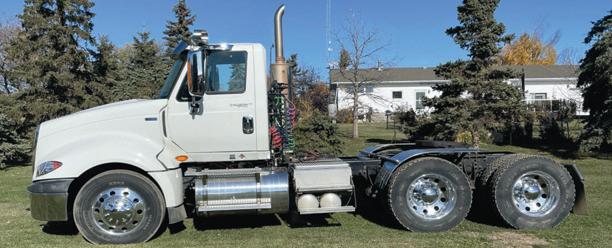









No public hearing on Bruderheim’s borrowing bylaw of $1.8 million Bylaw could increase taxes by $180 per year for each household
BY JANA SEMENIUKThe Town of Bruderheim will consider third and final reading during the April 3 council meeting for a borrowing bylaw that could increase taxes for each town household by $180 per year for the next 30 years.
The idea for the bylaw, which will allow the Town to borrow $1,856,233, was brought forward in Dec. by Chief Administrative Officer Phyllis Forsyth to help fund the $4.9 million water reservoir expansion which is currently still under construction.
Forsyth said additional funding has been requested from the government and the borrowing bylaw was for a ‘worst-case’ scenario if provincial funding fell through.
Chief Operating Officer Dennis Tomushcat said during the Oct. 4 council meeting that costs had risen since the pre-tender amount was received for
the project less than a year prior.
“I just want to make note that the previous amount that we had as a tender, was $4.3 million. In less than a year that number has gone up $700,000 due to material costs, labour costs, etc,” he said. Although the Town received a government grant in the amount of $3.1 million in April, which was based on 68.81 percent of the pre-tender amount of $4.3 million, he said the actual tenders came in at $4.9 million, well above that original amount.
CAO Forsyth has put in a request for the government to increase the grant amount to 68.81 percent of the new total, but to date has not shared whether a response was received.
Tomuschat said in a later interview that he had been trying for years to get approval for an expansion of the Town’s water reservoir, citing the need for a bigger reservoir to support

growth of the town and increase fire water protection.
“The standard for fire water protection in this town is 230 liters per second, we're only able to provide one third of that,” he said “The contract was awarded at $4.9 million. When I presented this to council, they made the decision that the costs are only going to escalate and we need to make a decision because we aren't going to be able to afford (this) and still maintain our taxes where they are if it keeps going up. The decision was made to go ahead with this initiative, which we have done, and the rest of the funding will be in place through MSI and a multitude of other grants.”
Despite Tomushcat’s Oct. funding prediction, a borrowing bylaw for up to $1,855,233 was introduced by Forsyth to council during the Dec. 13 meeting. It passed first reading on Jan. 10 and second reading Feb. 7, with third reading to be considered at the April 3 meeting.
Although several council members had questions for CAO Forsyth around the reasoning for the bylaw, and if the bylaw could be held off until responses from additional grant funding requests were received, all eventually supported the motion except councillor Len Falardeau.
“I can’t support this one bit. I've been around a long time and I think we're (being) duped somewhat with this. Because people are telling everybody Bruderheim is booming and we're growing so fast, and we just had a study telling us we are one of the slowest in the province. We got fooled on this. And this is going to destroy our town,” he said. “Just think about it; $180 a year to every taxpayer in this community will destroy this town. We should never have considered this.”
CAO Forsyth said,
during the Jan. 10 council meeting that a public hearing would happen before the second and third reading, then later during the Feb. 7 meeting said a public hearing was not necessary.
Two public notices placed in the Lamont Leader on Jan. 31 and Feb. 7, gave details on the need for the bylaw while two additional notices placed on Feb. 14 and Feb. 21 included details notifying the public that if they wanted to make a petition regarding the bylaw they had to do so by Mar. 5.
Bruderheim’s next council meeting takes place in person at the Bruderheim Fire Hall or streamed online on April 3 at 7 p.m.
The position would perform a variety of road maintenance duties including gravelling, paving and asphalt, crack sealing, spray patch, sign maintenance and other related work. Working with hand and power tools and some machinery. These are seasonal union (AUPE) positions.
Students’ welcome, training provided. Must pass a pre-employment drug screening. Qualified applicants are invited to submit resumes, along with photocopy of drivers licence and up-to-date driver’s abstract:
Email: wmears@emconservices.ca













































Elk
IslandWild Minor Hockey (EIWMH) association member Amanda West appeared as a delegate to the Bruderheim town council during their regular meeting Mar. 20, contesting the ice allocation for the upcoming hockey year.
West said prime ice times, during early evenings in the middle of the week, were given to hockey clubs in Fort Saskatchewan and nonsanctioned teams outside the area, making it harder for local kids to play in their own arena.
“Our concern is that by giving other hockey associations (Strathcona, Sherwood Park, Fort Saskatchewan, and all Superleague Teams) priority ice, our Bruderheim and Lamont County residents will not be able to utilize the facility within Bruderheim,” said West.
“We have (experienced) reduced ice time at the arena this season during the week for practice and have been losing a significant amount of ice time on the weekend to out of town teams booking practice, tournaments or games.”
West said EIWMH was created after an amalgamation in 2021 of both Bruderheim and Lamont minor hockey associations. She said soon after, the Town of Bruderheim changed their ice allocation policy and the group has been struggling with acceptable ice time in Bruderheim ever since.
“It’s always been Bruderheim minor sports that has had first pick of ice time as per the bylaws,” she said.
“We've lost our ice time since then, prime time hours since we joined and became one association Elk Island Wild.”
Bruderheim’s prior ice allocation policy listed six priorities for ice, with number one being Bruderheim Minor Sports, and number two being Fort Saskatchewan Minor Sports. The policy was changed in 2022 to number one now listed as ‘minor ice users’ and number two being ‘adult ice users’.
West said in her speech to council this change has had a devastating effect on EIWMH.
West said EIWMH uses the arena in
Lamont, in addition to Bruderheim, and are still given first priority for ice times there.
“We have no problems with Lamont,” she said. “(But Bruderheim’s policy) is really hurting the kids in the community playing hockey.”
A copy of the new weekly schedule was shared during the Mar. 20 council meeting, showing EIWMH had six of the filled 28 spots, with three on Mon. evenings spanning four hours, one Sun. afternoon, another Wed. at 9 p.m. and one Tues. at 6:30pm.
Mayor Karl Hauch said it looked as though EIWMH already had prime ice time, but West said it was about EIWMH having first pick of the ice times.
After West’s presentation to the council, Hauch asked Chief Administrative Officer Phyllis Forsyth if EIWMH was present at the ice allocation meeting.
“No sir,” she said. “There was some confusion with Elk Island Wild and when they thought the meeting was.”

A woman seated in the crowd offered an explanation before being asked by Hauch to refrain from speaking in the gallery.
“Well, Elk Island Wild was informed there was a meeting but they were told it was on a different day than it was actually,” said the woman.
Councillor George Campbell, a long-time town resident, said he remembered when the arena was built to support the community.
“I still believe that our minor sports within our community, should have priority over any other league or affiliation,” he said. “I think Amanda's request is not anything that our council could not look into and see a big improvement in.”
Councillor Ashley Carter questioned why the ice allocation policy was changed to begin with. Hauch said that after the amalgamation
of Bruderheim and Lamont, there were no longer only Bruderheim kids playing hockey.
“I believe it's because it's a mixed team. It's not just Bruderheim kids anymore and I believe administration recommended to council to look at changing the policy and this is what was brought forward,” he said.
Councillor Campbell questioned whether a previous financial agreement with Fort Saskatchewan, where they were given priority on ice times, was still in effect.
“We have an agreement with the City of Fort Saskatchewan, yes sir, that they do provide some funding for maintenance for our arena,” said Forsyth.
A line in the City of Fort Saskatchewan’s 2024 proposed operating budget stipulated a financial contribution of
$5,000 per year to the Town of Bruderheim to ‘ensure access to primetime ice availability at the arena for Fort Saskatchewan’s ice organizations’.
West’s presentation to the council was accepted as information.
Meanwhile, the council went into a closed session towards the end of the meeting regarding a confidential agreement with the City of Fort Saskatchewan.
Deputy Mayor Wayne Olechow made a motion, when the council came back to open session, to authorize CAO Forsyth to sign a five-year memorandum agreement with the City of Fort Saskatchewan which was passed.
Forsyth did not make details of the agreement public, citing FOIP (freedom of information and privacy) legislation.



































COMING EVENTS
Tofield Golden Club 5004 - 54 Ave, Tofield.
Popovich's 50's, 60's, 70's Rock 'n Roll Comedy Show April 11 at 1 p.m.
Cost $20 per person. Tickets available at the door or phone Jim 780.863.4353
All ages welcome!
Business Space for Rent in Lougheed. Call Peter for more information 780-888-7703
________________________
Clean, large, non-smoking 1 and 2 bedroom apartments for rent in Killam with Extra storage. Call Chuck at 780-2637290
________________________
BUILDINGS FOR SALE
INTEGRITY POST FRAME
BUILDINGS since 2008
BUILT WITH CONCRETE
POSTS. Barns, Shops, Riding Arenas, Machine Sheds and more, sales@integritybuilt.com 1866-974-7678 www.integritybuilt.com.
COMING EVENTS
90th Birthday!
Some friends and family are like gold...
Some birthdays are, too! We want to celebrate both blessings with you. Please join us in celebrating Fred Johnston's 90th Birthday, Sunday, April 14 between 1-4 p.m. at the Viking Seniors Centre. It's an open house with a light luncheon and beverages, and lots of laughs!
________________________ The Viking Historical Society will be holding their Annual General Meeting on Thursday, April 11 at 7 p.m. at the Viking Legion Hall. New members are always needed, and everyone is welcome to attend!
For Rent in Viking: Four bedroom home. $1100/month. Detached garage also available. Ph/Text: (403) 461-4350
________________________
Townhouse for Rent in Viking 3 bedroom 1.5 bath. Call for more info 780-385-5287
________________________
For Rent in Viking: 3 bedroom house; 2 bathrooms; washer/dryer. Available immediately. Call 403-4614350
80 acres - 50 cultivated, 30 in bush. Andrew Area. NE 1/2 of 10-57-17-W4 780.991.0820
LIVESTOCK FOR SALE
Coming 2 year old registered Gelbvieh and Balancer bulls for sale. Call Drew, with MacDonell Farms for info, pictures and videos. 780-6862716
WE BUY DAMAGED
GRAIN - Heated, Mixed, Tough, Light, Bugs, Spring Thrashed....Barley, Wheat, Oats, Peas, Flax, Canola. "On Farm Pickup". Westcan Feed & Grain 1-877-250-5252.
SEED FOR SALE
ALBERTA FEED GRAIN: Buying Oats, Barley, Wheat, Canola, Peas, Screenings, Mixed Grains. Dry, Wet, Heated, or Spring Thresh. Prompt Payment. In House Trucks, In House Excreta Cleaning. Vac Rental. 1-888483-8789.
BARLEY – * NEW-AB Standswell* Smooth AWN, High Yielding, Grain and Forage Great Lodging Resistance. 1st NITROGEN USE EFFICIENT CEREAL IN CANADA. OTHER BARLEY: Cerveza, CDC Austenson, CDC Maverick, Esma, Sundre. WHEAT –Pintail, Forage or Grain. OATS – AC Juniper, AC Morgan, AC Mustang, Derby, CDC S01 Super Oat. PEAS –Very Early Yellow Pea Forage Peas. ALSO AVAILABLE: Polish Canola & Spring Triticale. mastinseeds.com; 403-556-2609.
HIP/KNEE REPLACEMENT. Other medical conditions causing TROUBLE WALKING or DRESSING? The Disability Tax Credit allows for $3,000 yearly tax credit and $30,000 lump sum refund. Take advantage of this offer. Apply NOW; quickest refund Nationwide: Expert help. 1844-453-5372.
HELP WANTED
Hiring a Registered Massage Therapist or second year massage student. Competitive commission structure at our main street Tofield location. Apply by email: wyeknot.kim@gmail.com.
JP’s Country Daycare in Daysland is hiring for a part time ECE worker, 2 days a week to start and casual ECE workers. Email resume to jpcountrydaycare@gmail.com
Town & Country Guardian Drugs - Killam
We have:
•a Kodak picture maker.
•a colour/b&w photocopier.
•cold pop and fresh snacks.



•a great selection of candles, giftware, and fragrances. toys, games,and plush animals.
•a huge selection of Hallmark cards. •plastic gift cards
•vitamins, minerals, and herbals.
•free gift wrapping.
•prescription service
Open 6 days a week.
Painting
Quality Residential and Commercial Interior Painting
Betty Tkaczyk 780-632-8749
Carpet and Upholstery cleaning - residential and commercial. Truck mount unit, sewer backup, and flood cleaning. Auto and RV Cleaning. Call John and Sheri at Fancy Shine Auto and Carpet Care at 780-384-3087
CRIMINAL RECORD? Why suffer employment/licensing loss? Travel/business opportunities? Be embarrassed? Think: Criminal Pardon. US entry waiver. Record purge. File destruction. Free consultation. 1-800-347-2540. www.accesslegalmjf.com.
________________________
PRIVATE MORTGAGE
LENDER. All real estate types considered. No credit checks done. Deal direct with lender and get quick approval. Toll free 1-866-405-1228; www.firstandsecondmortgages.ca.
LS Construction
Specializing in Small Home & Office Renovations
Inter-Provincial Carpenter "No job too smallwe'll do what the big companies won't!"
780-385-4455
RJM Electrical. Ron Malowany, Mundare. ronmalowany@yahoo.com. 780-888-1130



SERVICES
Roy's Handyman Services. Flooring, Trim work, basement finishing, decks, fences, kitchen cabinet installs and carpentry work. Call 780-2323097
________________________ Need to re-order:
•Company Forms?
•Invoices?
•Envelopes?
•Business Cards?
•Bookmarks?
•Magnets?
•Stamps?
•Score Cards?
•Certificates?
•Invitations?
•Menus?
•Receipts?
•Posters?
•Calendars?
Call your local paper with your print order today!
WEEKLY REVIEW
780-336-3422 vikingreview@gmail.com
TOFIELD
MERCURY
780-662-4046 adsmercury@gmail.com
LAMONT LEADER
780-895-2780 lmtleader@gmail.com WANTED
COLLECTOR/ ENTREPRENEUR PURCHASING
PAID!
Lamont County council will not be sending any representatives to the annual Federation of Canadian Municipalities convention in Calgary later this year.
“From what I understand, typically Lamont County councillors have not attended the FCM,” said Chief Administrative Officer Peter Tarnawsky.
“We have not attained an ongoing membership in their organization.”
He said part of the registration fee for the conference was only $100 more for non members than for members, and full membership to the Federation was $2,000.
The conference is scheduled for Calgary from June 6 to 9.
In a sheet given to
councillors the cost per councillor to attend was $1,195, per member, with hotels for five nights costing $745, and per diems costing an estimated $1,229.30 for a total cost of $3,169.20 per councillor.
Councillor Roy Anaka said he didn’t need to attend, but he would support it if another councillor wanted to attend.
Deputy Reeve Daniel Warawa told council he wouldn’t be available to attend.
Councillor Aaron Wick said he had never been to the conference before, but “with the cost of it and us not being active members we get the FCM highlights and we have a councillor from Strathcona County who is a member and
can get any questions we might have answered. I think it is too expensive.”
Councillor Neil Woitas agreed, saying it was too expensive.
“They had one of those in Quebec and then the last one in Ontario the CAO and I were supposed to attend but COVID hit and put a stop to that. We haven’t been sending anyone and I don’t know what the benefits are.”
Reeve David Diduck said he would be attending a Heartland Association conference the following week and he wasn’t prepared to attend two conferences in two weeks.
Council accepted the report for attendance to the conference as information only.














When Lamont County Chief Financial Officer laid out administration’s plans and dates for community coffee talks between councillors and the residents, councillors balked.
“In your ongoing desire to communicate with residents we developed a strategy for councillors to meet with them a couple of times a year and Mr. Boyko will speak to it,” said Chief Administrative Officer Peter Tarnawsky in introducing the topic at the regular March 26 council meeting.
“This was a new initiative in the budget,” said Boyko.”Administration is suggesting each councillor have a meeting within their division twice a year and each would be supported by the Reeve or Deputy Reeve and a member of senior management.”
He had prepared a schedule and when councillors saw this they rebelled.
The meetings were scheduled for Wednesdays at either 10 to 11 a.m. or 2 to 3 p.m. in the afternoon.
He said the intent was to have informal conversation with ratepayers and there would be no formal agenda for the coffee talks.
Boyko said administration would be there to listen to the comments and concerns and then they would follow up by providing answers on the County website or in the monthly newspaper ads.
He said the sessions would not be recorded, but photos could be taken.
“My dates are fine but those times don’t jive,” said Councillor Aaron Wick. “I would rather try to meet between 6 and 8 p.m. Most of our ratepayers have full time jobs and they can’t meet during the day.”
“This would give them the opportunity to get home, have dinner and then come out to meet.”
He said the County of Minburn had meetings with residents between 4 and 7 p.m.
Reeve David Diduck agreed.
“Having a meeting at two in the afternoon you won’t get too many ratepayers. You either do it early in the morning or
later in the evening. You don’t want to interrupt the middle of the ratepayers' day.”
Councillor Neil Woitas said the times wouldn’t work in Division 5.
“Believe it or not you have farmers there and people are working,” he said. “It’s got to be in the evening.”
He said after the dates and times were announced he had received some calls from ratepayers saying they would like to have all the councillors there.
“May just won’t work at all,” he added. Division five had been scheduled to lead off the coffee talks sessions with a meeting on May 1.
“Two and half weeks ago we had a meeting with the River Rats when they had a wiener roast and there were 65 people at that. Another time we met in an airplane hangar so I am getting out there and meeting residents.”
Tarnawsky said administration had put the proposals out there for council’s decision and they could decide to modify it however they wanted or not proceed with it at all.
“Sounds like Councillor Woitas has many opportunities to engage with his ratepayers.”
Woitas said anyone was welcome to join him. He added he meets at the airplane hangar generally on Wednesdays and the River Rats having events all over the County.
Diduck said he didn’t think the meeting should limit who attended and wondered if council should consider a different format.
Boyko said the success of the meetings was dependent on having residents who wanted to have a serious conversation about a subject and not necessarily those who wanted to stand up and “grandstand.”
“People want to go to a coffee shop and talk to their councillor over a cup of coffee and talk about the potholes and find out what the schedule is for fixing that.”
Having the entire council there would work, but it may intimidate others, he added.
Diduck said if they went with an open house format he didn’t think the representation would
come for all across the county.
“You might have the same topics come up but they wouldn’t be talking to a select group. I support the localized coffee talks but I’m open to adjusting the timing.”
Councillor Daniel Warawa said he didn’t want to see the coffee talks turn into a “kangaroo court.”
The way things are happening in our County right now, I think this could be a problem,” he said. “The comments I have now from residents is ‘What’s happening to your county?’ ‘What’s going on in Lamont County?’ ”
Tarnawsky asked Warawa if he could directly answer those questions.
“No not really,” was the reply.
Councillor Roy Anaka said he had no issues with the times.
“There are quite a few people coming into town everyday for coffee around those times,” he said.
Boyko said the choice of day and times were around traditional coffee times, but administration was flexible on the dates, times and locations.
“Let the individual councillor pick the times, date and locations and see how it pans out,” stated Diduck.
Boyko said administration could work with the councillors to establish the best times and locations to suit them.
“This is an outreach to the community,” he said. Woitas pointed out if a meeting was being held in a restaurant and a coffee talks was being held at the same time he didn’t think that would be appropriate.
Anaka said councillors could pick their own venue.
Diduck said council wasn’t going to approve the proposed schedule, but councillors could arrange time and location with administration Council passed a motion to go ahead with ten coffee talks and have administration move ahead with the promotion and organization of the meetings with each councillor organizer the time and location. It was carried.

• 5119 - 48 Ave, 4712 - 51 St, 5121 - 48 Ave, & 5116 - 47 Ave Lamont AB. 5,800 sq ft shop on with additional 3 fenced lots across the back alley from the shop property. Shop was used for agricultural machinery repair. All properties must be bought together. Price $650,000
• W4-17-53-2-SE both halves Lamont County. 160 acres #2 soil 135 ± acres cultivated near Mundare. Price $640,000
• W4-20-55-27-SE Plan 1023701 Block 1 Lot 1A Lamont County. 138.09 acres in the Lamont Heartland for industrial use. Located North of Highway 15 on Range Road 202. Price $2,990,000
• W4-12-55-27 NW 146 acres with 1/2-mile frontage on the North Saskatchewan River. HWY 29 and RR 123 50± acres of cultivation power at property Nicely treed lot for a building site. Price $350,000
• SW Part of NW –23 –53 –23 –W4 40.55 acres North of Highway 16 on Range Road 232 in proposed medium industrial zoning with CP rail line at the border of the property. Price $7,200,000
• Parts of SW and SE -7-53-22-W4 located at Highway 21 and Lakeland drive 63.62 acres of development land with Highway 21 exposure. The property is within the Bremner and local Employment Area ACP with expected future use of industrial. Price $5,100,000









Save the Date – Farmer Appreciation BBQ and Open House
More information will be posted closed to the date for Lamont County Agricultural Service Board BBQ and Open House. This is planned for June 13 from 4-9 p.m. at the Lamont and District Agricultural Grounds.
Community Services: Serving Lamont County, Lamont, Bruderheim, Mundare, Andrew & Chipman
(VISIT: lamontcounty.ca/community-programming or call 780-895-2233 for info. or registration). Some of the current CALC, FCSS & KFRN include:
1. Parents and Tots (Andrew: Thurs. & Lamont: Wed.).
2. CALC: Digital Skills Workshops (Andrew and Mundare); Creating Family Connections; Kitchens; and English-Language Learner programs, contact Cheryl B. at 780-895-233 x233 or Cheryl.B@lamontcounty.ca for more information.
3. FLEX for Boys and True2U for Girls (weekly).
4. Youth Centre: Bruderheim, Chipman and Mundare (weekly).
5. Grief Support Group (weekly).
6. Yoga for Older Adults (Lamont, 8 wk. program starting March 19) contact michelle.a@lamontcounty.ca or 780-895-2233 x223 for info.
7. Meals in Motion: April Menu. Call Chrissy to order at 780-975-9592.
8. Benefits and Supports for Older Adults – Mundare (michelle.a@lamontcounty.ca).
9. FCSS Volunteer Income Tax Program – Contact FCSS at 780-895-2233 x226.
10. Volunteer Appreciation Week 2024 (April 15-18)

Access current monthly services & programs information scan the QR code or for FCSS, CALC and KFRN on each of the services’ Facebook pages: | FCSS: FCSSlamontcountyregion | KFRN: groups/1922602184662497 | CALC: LamontCountyAdultLearns |





For more information, scan the QR code or visit lamontcounty.ca/community-programming
| Contact CALC/FCSS/KFRN: 1-877-895-2233 | 5303-50 Ave. Lamont, AB T0B 2R0 |


APRIL MENU
NOW AVAILABLE

View a larger menu at lamontcounty.ca/ community-programming






Everyone is welcome!





ALERT Line 1-800-455-9003
Note: Alberta SPCA, in collaboration with former Alberta Farm Animal Care (AFAC), is now responsible for the Animal in Distress ALERT line.

EIPS Kindergarten Registration 2024-25
Kindergarten registration for the 2024-25 school year is now open! To register (eips.ca/registration/ kindergarten) in the 2024-25 school year, your child must be five years old on or before Dec. 31, 2024.


If your last name or company begins with the letters D and G; remember to get your registration renewed before the end of April! alberta.ca/vehicle-registration-expiry-date-chart.aspx
This message is brought to you by the Elk Island Traffic Safety Partners.
Please Note – inFocus is also available for viewing online at: www.lamontcounty.ca/communications (for those wanting to view the weekly submission as full-sized PDF and to access hyperlinks).
y yp)



20 - The Lamont Leader (Lamont, Alberta), Wednesday, April 3, 2024




Community Programming

Next Agricultural Service Board (ASB) Meeting (April 10)
The next ASB meeting is scheduled for April 10, at 9:00 a.m. The public is welcome to attend at the Lamont County Administration Building or virtually through Microsoft Teams (link): lamontcounty.ca/departments/agricultural-services/ agendas-minutes-asb.
To present or speak at a meeting, please contact Agricultural Services.

Lamont County Council has directed Administration to conduct a closed bid auction for Lot 425R 2 1 NW-5-54-17-4 in the Hamlet of Hilliard.
Sale is conditional of Council approval, and the successful bid will waive any claims against the municipality for the environmental condition of the land—land is sold “as is”.
Bids can be submitted confidentially to Lamont County Administration by May 1
More details are available at:lamontcounty.ca/public-tenders.



Fire Burning: Please follow the www.albertafirebans.ca for the most up to date fire restriction/fire ban information.
Brush Pile Burning: All brush piles must be extinguished as of March 1 as per Lamont County policy. Emergency services crews will be contacting permit holders to schedule a time to have bush piles and demolished buildings that were burned this past season inspected using thermal imaging cameras to ensure these are extinguished. No fire permits for brush pile & demolished building will be issued until November 1, 2024 (lamontcounty.ca/departments/emergency-services/fire-permits).

Lamont County starts its annual beaver control measures in early spring. Beaver trapping commences in problem areas to reduce damage to water bodies and to open up flow on moving water. To prevent getting caught in traps, please keep pets on-leash for safety near control areas. Note: it is a criminal offense to damage or remove traps. If additional information is needed, please contact Agricultural Services at: (780) 895-2585.

Even with less snow, spring warming can result in localized road flooding. If you come across a flooded road, proceed with caution or find an alternate route. Please report it to Public Works at lamontcounty.ca/service-requests
If the road is barricaded/closed, use an alternate route. Road closures are posted on Facebook/Twitter & lamontcounty.ca/pw-roads
If you are aware of a blocked/frozen culvert on a County road, please report this to Public Works (for concerns on primary/ secondary Hwys, contact Emcon).




Next Lamont County Council Meeting (April 9)
The next Regular Council Meeting is on Tuesday, April 9, starting at 9:00 a.m. The public is welcome to attend at the Lamont County Administration Building or virtually through Microsoft Teams (link): lamontcounty.ca/governance/agendas-minutes.
ClosedHastings Lake Animal Hospital has extended dental health month, commonly held in February, to be held from December to April. Located about 15 minutes west of Tofield, the full-service veterinary clinic offers care for companion animals and a whole host of farm pets.
“We see farm pets like poultry, fowl, pot belly pigs, pygmy goats, but only if they have a name and can walk into the clinic politely,” said Dr. Karen Allen, owner of Hastings Lake Animal Hospital.
Allen has been running a dental health month program in her practices since 1999, and many colleagues of hers run similar programs in their practices across North America.
“We are going into our
ninth year at Hastings Lake, but I first practiced on Vancouver Island in a mixed animal practice, then Edmonton where I started Mill Creek Animal Hospital which I later sold, then across Canada with a corporate group as their National Medical Director and partner, and then I landed right here working next door to my home!” Allen said.
In an ideal world, Allen said, pets need their teeth cleaned every day, and the frequency of a regularly scheduled professional cleaning by a veterinarian is determined on a caseby-case basis.
“Brushing teeth at home is never as easy as it sounds. There are many new products on the market that support home oral hygiene programs for pets where brushing is not going to happen on a daily (or ever!)
basis. We have dental wipes, water supplements, dental diets, oral rinses and various chews. I did not list bones...bones are bad, no two ways about it. They causebroken teeth, gastrointestinal issues and many a dog has been stitched up after fighting over bones. In my opinion, dogs should never be given bones.
“Some pets are not amenable to oral exam without sedation; they would prefer to give us a dental impression on our arms! For those pets there are a variety of pre-visit sedatives or sedations that can be used to get a good look in their mouths to determine what the best course of action would be. There are some outlets that provide teeth cleaning by non-veterinary staff. I always advise my clients that dental cleaning in pets requires general

anesthesia because we can’t properly clean under the gumline or get to the back teeth (which are often the problem area) in an awake patient. I also really worry about sharp instruments so close to eyes in awake, wiggly patients!” Allen said.
The program is designed to promote oral health for dogs and cats, and inform pet owners of common diseases.
“Periodontal disease, an infection of the tissues that hold teeth in place, is one of the most common conditions we see in pets. This can sometimes result in very serious health issues. People often think bad breath is normal in pets, but it certainly is not. Just because a pet is eating does not mean they are not having dental pain. They have no option but to eat, pain or not. Dogs rarely get caries, (tooth decay, also known
as cavities) like humans; they get periodontal disease and dental abscesses instead, which can be very painful,” Allen said.
Allen said the best way to determine how to best keep a pet’s mouth healthy and maintain oral health is to take the animal for an exam.
“This program helps us to create opportunities to talk to clients about their pet’s oral health and options for getting their pet’s mouth healthy again. The first step is always an exam and then we can make recommendations from there. As a general rule, most small breed dogs need their teeth professionally cleaned by a veterinarian annually starting between 2-4 years of age. In my experience, large breed dogs need dental exams annually to look for broken premolars/molars which are common in our big
chewers and active dogs. Large breed dogs also frequently need professional dental cleaning, but usually not starting as young as the small breed dogs,” Allen said.
“Cats are highly variable in their need for professional dental cleanings and an annual dental exam will help you know if your cat is predisposed to dental issues. Cats get a particular issue called Feline Odontoclastic Resorptive Lesions where the tooth resorbs and exposes the nerve which is very painful and will affect eating. With such cases those teeth will need to be extracted,” she said.
The program, most often held in the month of February, is set at this time due to the fact that winter is often less busy for vet clinics.
“Winter is a slower time for veterinary clinics,
Continued to page
Continued on Page 23

Our community is enhanced by the many family operated farms in the district. They have demonstrated their ability to cope with both prosperity and adversity to achieve economic stability. We salute all those families now and all year round.













































• 5119 - 48 Ave, 4712 - 51 St, 5121 - 48 Ave, & 5116 - 47 Ave Lamont AB. 5,800 sq ft shop on with additional 3 fenced lots across the back alley from the shop property. Shop was used for agricultural machinery repair. All properties must be bought together. Price $650,000
• W4-20-55-27-SE Plan 1023701 Block 1 Lot 1A Lamont County. 138.09 acres in the Lamont Heartland for industrial use. Located North of Highway 15 on Range Road 202. Price $2,990,000
• SW Part of NW –23 –53 –23 –W4 40.55 acres North of Highway 16 on Range Road 232 in proposed medium industrial zoning with CP rail line at the border of the property. Price $7,200,000

• Parts of SW and SE -7-53-22-W4 located at Highway 21 and Lakeland drive 63.62 acres of development land with Highway 21 exposure. The property is within the Bremner and local Employment Area ACP with expected future use of industrial. Price $5,100,000























the Canadian Rockies Hemp Corporation (CRHC) located in Bruderheim, is finally seeing production out of his multi-milliondollar hemp processing facility, five years after the company first came to town.
Barr, 40, dreamt of being able to grow and process the plant on a large scale, which can be used to produce a wide variety of products including building materials, clothing and paper.
Although hemp is related to cannabis, it contains less than 0.3 percent THC (the chemical which gives cannabis it’s psychoactive effects) while today, cannabis contains an average of 15 percent or more.
“We don't need to be cutting down more


forests and making more polyester and fiberglass when this plant-based material can substitute all of that,” said Barr.
“It's a pretty cool opportunity to be able to grow a crop and process it for your clothes to building materials to composite panels in your vehicles. It can all be made out of hemp.”
Barr’s operation uses a process called decortication to separate the outer hemp fiber from its woody core, enabling the production of several products using both parts, including textiles, insulation, construction materials and animal bedding. Barr said nothing goes to waste.
His initial plans in 2019 for the 75-acre property, was the construction of a 40,000 square foot building that would handle up to 50,000 acres

of hemp production per year. Construction was first delayed by a large amount of rain as well as waiting for approval of their development permit. Construction finally began in late 2019 but was shuttered in the spring of 2020 by the COVID pandemic.
“COVID came and just shut everything down.
And then the whole world's supply chain of trying to get machinery and parts and finish the construction came to a crashing halt,” he said, adding that construction on the building was finally finished in 2021.
Barr said finally it seemed as though things were looking up. Local farmers were contracted
to grow the hemp and Barr purchased special processing equipment from England spending both 2021 and 2022 having it shipped and installed. As soon as he tried to use it, however, there was trouble.
“We got all the equipment in place and went to go stick in the first bale and it wouldn't even make it past the first 20 feet of the equipment,” he said.
“It was supposed to do four tons per hour and produce 98 percent purity, and then the first six months it wouldn’t even produce one ton an hour at 80 percent purity. So we had to re-engineer, re-design, rebuild a whole bunch of equipment to even get it to 50 percent capacity of what they sold it to us at.”
Barr said he had no time to consider law-
suits. As his engineering team was learning how to process the hemp fiber on a scale that had never been done here before and rebuilding the equipment to handle it, large bales of hemp were being brought to the facility for processing.
The bales continued to pile up in the yard of the facility and today amount to 20,000 tonnes.
“In 2022 we (had) 6,500 acres (grown) in preparation for that equipment turning on and being able to process right out of the gate,” he said.
“This year, we'll probably do next to no farm production just because we have so many bales to get through over this year. We'll look back to start ramping up the farm production in 2025.”
Continued on Page 11












































































Leslie Cholowsky
April showers bring May flowers, and also signals the hopeful start of true spring to many Albertans.
For those who are outdoor enthusiasts and like to traverse the scenic foothills on the western side of the province, April also presents the opportunity to get a glimpse of the newest members of Alberta’s wild horse population.
Spring is typically the time that new wild horse foals arrive, and an Alberta advocacy group is asking the public to be aware and cautious if planning a trip in the backcountry. Alberta’s feral horse populations range the Eastern Slopes of the Rocky Mountains between the Sheep and Brazeau Rivers, according to the Province’s Feral Horse Management framework.
Help Alberta Wildies Society (HAWS) President Darrell R. Glover says, “Wild horses throughout the province start foaling in April, and it’s not uncommon for outdoor and recreational users on Crown land to see them while out enjoying a day in the backcountry.
“Newborn and young foals are particularly vulnerable during this time as they can easily become separated from their mothers and their natal bands if disturbed, making them prime targets for starvation or predation.”
Glover says when a group of wild horses or mares are spotted, this time of year often means a young foal may be resting, lying in the bushes.
He says getting too close to the herd, or travelling too fast through the area can cause the herd to flee, leaving the young foals behind.
“Alberta’s wild horses are a precious natural resource and attract scores of visitors and photographers from around the world who want to see them roaming wild and free in the backcountry, especially in the spring
when foals begin to arrive,” says Glover. “We just ask that when doing so, people are respectful and cautious Give the horses some space; don’t scare them or give them a reason to flee.”
Glover says the wild horse foaling season is critical to the sustainabil-
ity of the species - a species that is unique to Alberta according to DNA analysis and unlike any other horses in the world.
“Predation in the backcountry especially in the Sundre Equine Management Zone (EMZ) is particularly high. We
estimate only 10 per cent of the foals born annually survive, so it’s critical as many foals as possible make it to adulthood.”
According to the Province, the Sundre EMZ has the highest population of wild horses, determined in 2021 to be just shy of 800 animals.























The 2024 Farming Smarter Conference and Trade Show recently kicked off with a Fireside Chat between John Kolk of Farming Smarter and Robert Andjelic of Andjelic Land Inc., Canada’s largest farmland holder.
Andjelic explained that he has a long history of entrepreneurship and investing, starting with him buying his first house for renovation at the age of 17 and later, he was a cofounder of a masonry company, that started with doing masonry housefront, then drifting into doing commercial buildings. In 1987, Andjelic says, he went into commercial real estate independently. After foreseeing the coming recession with the demise of the subprime market he and his family put their entire portfolio of over 250,000 square feet up for sale.
“This was my and my family’s lifetime of work, so it wasn’t an easy decision, but I foresaw the market crash coming and I didn’t think that I had any choice,” said Andjelic. “My idea was to sell at the top, then get back into the market at 50 cents on the dollar, after
the economic crash took its toll. In between I played the commodities market for around four years and eventually I decided to look for something else, that I thought would have a better future. Being in commercial real-estate most of my life I’ve seen manufacture’s, distributors and other businesses go broke as China took a bigger and bigger market share. Before going into another business venture, I wanted to see what was Canada’s advantage that we had that couldn’t be easily duplicated and produced in the other countries, no matter which one wins the manufacturing and technological race and increases their buying power of the middle class.”
The answer that he came up with, Andjelic said, was agriculture and water, and that is what led him to invest into farmland, so he slowly liquidated all his commodities holdings and started to buy farmland. His first acquisitions, Andjelic said, were acquired in 2010 and his first farmland acquisitions were under his name and then eventually incorporated under Andjelic Land Inc.
When Kolk asked And-


jelic what economic indicators he looked at to get into farmland, Andjelic explained that it was mostly associated with climate change. Climate change, Andjelic said, will limit most countries from getting top yields or yields that they are used to.
That trend, Andjelic said, was identified around 15 years back, during his research into climate change and study of solar cycles as well as the Gleissberg cycles. In his research, Andjelic said, he found that the United States will be out of commission, as we knew 30 or 40 years back, as far as agricultural production is concerned, specifically the western
Continued on Page 7









































half of the U.S. including California and the furthest south portion. Andjelic also said that during his discussions with some US cattle buyers they told him that the wells in the US central and western parts, are going deeper and deeper. Fifty years ago the wells were 150 to 200 feet deep and they had plenty of water. With time, Andjelic said, they had to go deeper and deeper from 500 to 1,000 feet and now they are 1,500 feet plus.
Kolk then asked if Andjelic saw his move into land as farming or an investment. Andjelic stated that it was both because his company is partners with the producers, and they all want what’s best for the land, so it is also definitely an investment.
Then, Kolk wanted to know what Andjelic looked for in people he wanted to purchase land from. Andjelic explained that Andjelic Land Inc. likes to work with likeminded thinking producers, particularly the ones that do a lot of soil testing and return back any nutrients to the fields, and they also like to work with producers that are technically advanced, use the latest equipment and follow the latest and best farming practices.
When Kolk asked Andjelic about some of the challenges he saw for broad scale agriculture in the prairies over the next five to 10 years, Andjelic explained that he saw many including geopolitical issues, interest rates, how climate change is going to affect producers, and how he feels demand is going to outstrip supply.
As far as interest rates are concerned, Andjelic said he believes that there will be contradicting data coming out in the short term, but longer term, but he sees possible recession on the horizon.
In terms of investing in farmland, Andjelic said, today it is virtually impossible to get a return of more than 3 per cent on rental farmland. However, he bought most of his portfolio when the per acre price was $500 to $1,000
per acre and that land has the same rental rate as today’s $4,000 per acre land.
“This is no different than most of today’s producers who bought land way back at even lower prices than mine, then buy some at $4,000 or more, this just makes their total cost base a little higher,” said Andjelic. “Some producers out there are carrying land that they bought at $100 per acre way back, so it is no problem for them to pay today’s price and still be very viable.”
Agriculture, Andjelic said, is a very capital-intensive business, hence very difficult to get into.
“We got several well motivated individuals, who were also employed by our tenants, started farming by way of us, giving an individual a quarter section of land for the first
year rent free, but rent payments start after that," said Andjelic. "The individual’s employer, also our tenant, would allow him the use of all his equipment for only the price of fuel. After a few years he bought his own quarter of land, as by now he had a production and credit track record. For new entrants into farming, land is only one component, they also have the high cost of equipment as well as inputs. As a matter of fact, land, which is the most critical component, is the lowest cost, especially if you are renting. Let’s take an average rent of $100 per acre, if you were to buy your land, at today’s interest rates, based on let’s say 7 per cent and a cost of $4,000 your interest on that amount is equal to $280 per acre. Renting land is by far the cheaper route."





























The RCMP RAVE app has been credited with the quick return of stolen property after an incident of theft in Wainwright.
RCMP say that on March 7, Wainwright RCMP were able to return a stolen truck, trailer, and ATV to the rightful owner with the help of the Rave Mobile Safety mass notification system and the people of the community.
The theft was reported to policy early that morning and RCMP promptly shared the information with the public through a Rave alert. By 11 a.m. a citizen reported seeing the truck with the stolen property in a nearby community, Fabyan. At 2 p.m. a local farmer reported the location of the ATV and trailer. Both individuals recognized the stolen property from the Rave alert’s description,
police say.
RCMP advise that by mid-afternoon the rightful owner of the property arrived to return the stolen property to their home in Wainwright.
RCMP Alberta says, “The rapid return of stolen property demonstrates the advantages of the Rave Mobile Safety mass notification system.
“Rave enables community members to assist police and be a useful resource to their local detachment and their respective community.
“By staying informed about public safety, residents and the police can work together to reduce crime and improve the safety of their communities.”
To start receiving Rave notifications, users can register online and then select the region or regions they wish to receive alerts for, as well as the


type of information they want to receive, including: Traffic advisory notifications; Crime watch notifications; Crime prevention tips; Requests for public assistance; and General public safety messaging. Users can decide how they will receive alerts issued on the app.
For more information, or to sign up, visit
ruralcrimewatch.ab.ca/l/rave
The Alberta RCMP encourages residents to sign up for the Rave Mobile Safety mass notification system as an additional tool to be used in crime prevention and community safety.
Rave alerts provide Albertans with real-time, trusted information around public safety and crime prevention.




















When you compare the PowerRich fertilizer program with traditional fertilizer you’ll notice 3 big differences and they are:
PowerRich, along with your present nitrogen program, provides a total fertilizer. In addition to phosphorus and potassium PowerRich also provides all of the other nutrients that are either absent from your soil or in a form unavailable to your crops.
PowerRich fertilizer uses nutrients that are all compatible with one another. PowerRich uses primary, secondary and micronutrients which are compatible and are readily available to your crop. 3
The third main difference with the PowerRich fertilizer program and traditional fertilizer, is that rather than applying the fertilizer all in one shot, the PowerRich program is a 3 part program that is tailored to the different requirements of your crop as it grows.



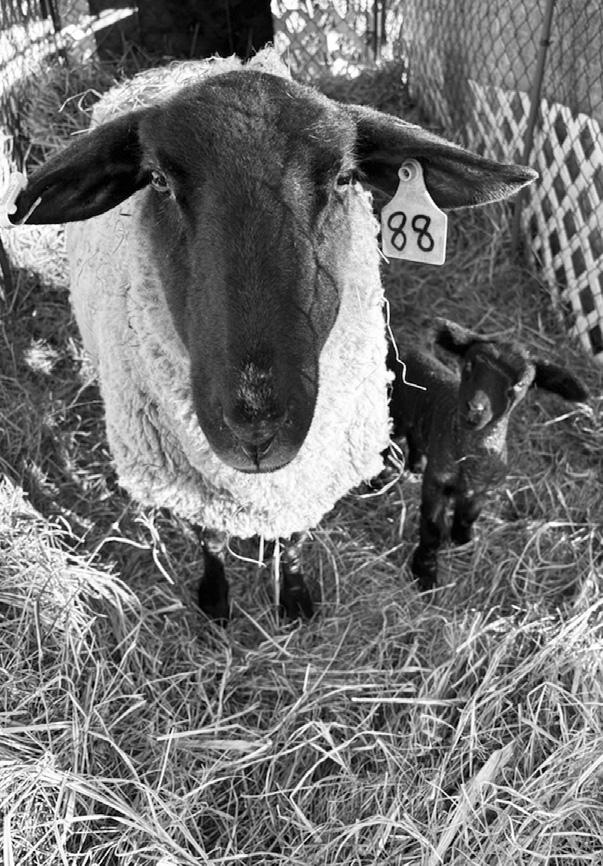























































When Barr initially recruited farmers to grow the hemp, he said the plan was to provide the seed and fertilizer while the farmer would harvest the crop and deliver the bales of hemp to the facility. Barr said those plans changed.
“(The farmer planting, harvesting and delivering bales) is pretty much what every other hemp coordinator does in the world. We quickly found out that farmers don't want to go buy new equipment and don't want to experiment. So, we had to really take on that whole cultivation model (ourselves),” he said.
“We are pretty unique in that we do that whole production. We’ve become a full custom harvesting operation. We didn't ever think that we would become full farmers ourselves, but it's allowed us to kind of prove our model (and) farmers take less risk of not having to go buy new equipment. The farmer only has to seed spray and walk away. They can go focus on their other crops, we’ll come in and do that full harvest so It's a really good reliever of operational efficiency for the
farmer.”
In light of the added harvesting operation, Barr said two full harvest crews are currently being hired. He said CRHC already has a staff of 20 and will be looking to add 12 more this year with another 20 next year.
“We’ll have close to 60 full time people by this time next year,” he said. Barr said that hemp crops also increase soil health and help increase yields for subsequent crops planted.
“It’s crazy what it does to the soil. We’re seeing that deep tap root system go three meters down into the soil bed helping micronize those nutrients that are further down and making them more available for the next year’s crop,” he said. “So we're making food production and crop production more productive here with this crop, which is the whole point of adding crop rotations.”
Meanwhile, Barr has also been spreading the word about hemp by appearing as a guest speaker at various conferences around the world. He said the response has been very positive, but added that he would like to see more Canadian manufacturers get on board.
“It's sad to say, but less
than 10 percent of our production is seen within Canada. We're going to really start to promote and educate more in Canada to try and get manufacturers on board,” he said. “Instead of just exporting this material out of our country, it's a great material that we can use and consume here.”
Barr said CRHC is expected to process 500,000 pounds of hemp per week by the end of this year.
While it’s been a hard road for CRHC, with seemingly insurmount-

able challenges at times, Barr said he can’t imagine doing anything else.
“It’s what gets me out of bed in the morning. The demand for this product is so much more substantial than we ever thought it was. Learning how to create new crops and harvest and process and then create new markets that’s never been done before in Canada is definitely a learning process. As stressful as it's been, I couldn't imagine doing something more beneficial not only for the farming community, but for the environ-
ment,” he said.
“I know everyone's pushing towards net zero and carbon reductions. Growing this crop and processing it into sustainable materials is a way that we can definitely reach those net zero goals. So we really see ourselves expanding the
production out of this Bruderheim facility. Our goal is by 2026 to be maximized at this facility, which would do about 40 to 50,000 acres per year, and then start duplicating these facilities across Alberta and Saskatchewan.”






























































































Rural residents filled the Lamont Community on Feb. 7 as Melissa OrrLangner, a farm water specialist from Alberta Agriculture, gave a seminar on how to deal with a drought situation on farms and proper construction of a dugout.
Her talk she stated would be about planning for a drought and how to create sustainable water sources for the farm.
“Mostly I’ll be touching on dugouts because those are the things most impacted during a drought,” she said.
“I’ll talk about wells, and I’ll talk about our funding programs available.”
She said the first thing a farmer had to do was to determine the water requirements for the farm and create a longterm water management plan.
Through the use of charts she explained how





the water needs for a farm is calculated and stated during the summer months water requirements would be greater.
Orr-Langner left copies of her slide presentation with Lamont County’s Hannah Musterer, who hosted the seminar and these are available through the County Agriculture Services Department.
“Once you have determined your water needs, then look at what you have for water sources from wells, dugouts, water courses to determine your water capabilities.”
Concerns surrounding the viability of a well could be its age and the quality of the water.
The same thing applied to dugouts, she added.
Once the water inventory is determined, she said, and the farmer knows their water sources, any shortfalls


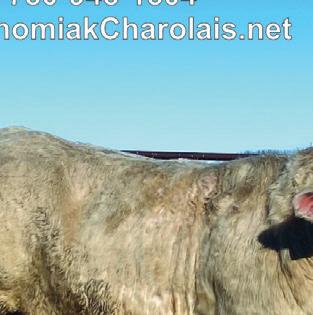


must be determined such as lower water volumes in the dugouts, and potential drying up of water sources which livestock can no longer feed from.
“Overpumping and overuse is definitely a concern during drought times,” she said. “We have heard from people concerned about shallow groundwater. It has been pointed out that in the southern part of the province some of the wells have been drying up.”
She stated once the shortfalls had been determined then solutions could be sought, and using the resources of the province was a good place to begin.
“Farmers usually know what they want to do on their farms, but we can provide help with possible funding, determining volumes of water need and how to achieve maximum results from the



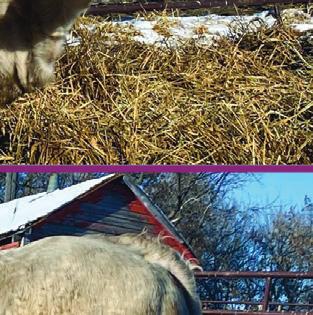

water sources available.”
She added experts in her department could assist in choosing the best locations for new dugouts if they were needed on the farm.
Continued
Continued on Page 20

Mayor,


































































































toinsuringy s no b e ’ Ther yourp usine l.
th We the risk an e wa w n e r k out o nt to ta t k o Far of e so ake ke ming ome o me of
k to us ab alktousab a farmers very business a v gest f he lar t pays to dea to insuring y T bout wel ery lo arm l wit your


hey un ime, and t nd ong t l of Cana ers in al ad insur he experts. Our frieen , h t iability , your l y, y, pr s ’ ike farming. That ss l operty ,andyourincome,it , when it comes y,why y ourinco yourincom f e needs.




r your farm insurance h d he needs of derstand t tdt h da. They’ve been in t Th’bi e wanesa awanesaa awanesa ar W nds at W , and your income, it erstand your incom satW s at W . y urfarminsura e needs t tailor tailoring a package fo o


























Registration is now open for farms and ranches to be part of the 2024 Open Farm Days, set for the weekend of Aug. 17 and 18.
Since 2013, Open Farm Days has seen over 183,000 visits, injecting almost $1.5 million into the rural economy through on-farm sales.
In 2023 alone, $300,000 in on-farm sales were generated from this event.
Since its launch the public has enjoyed over 1000 Alberta farms and the number of culinary events, celebrating farm to table, has increased to 74, from just 12 back in 2013.
Host farms in the program have included traditional farms, livestock (bison, cattle, alpaca, sheep, llama, goat, poultry) farms and ranches, organic operations, corn mazes, wineries, craft distilleries, meaderies, craft breweries, stables, and petting zoos, along with honey, fruit,
vegetable, grain, and u-pick farms.
2024 Open Farm Days will shine a spotlight on the alpaca.
While a relatively new species to Alberta farms, these animals are now an important part of Alberta’s thriving fibre industry, which also includes products such as goats wool (cashmere), sheep wool, and hemp.
It’s estimated that there are
28,500 alpacas in Canada, with 40 per cent of those in Alberta.
The United Nations designated 2024 as the International Year of the Camelid, which includes alpacas and llamas.
Alpaca fibre comes in a variety of colours, and is much warmer and stronger than sheep’s wool. It’s also non-allergenic and repels water.
For producers new to the concept, there is training available.
Host farm training sessions are free, and open to anyone interested, whether farms or organizations interested in
For 2024, Alberta Open Farm Days has partnered with artist Kaylee Wray to celebrate this year’s theme. Colouring book images of Wray’s art, depicting alpacas, is available at albertaopenfarmdays.ca
participating in an Open Farm Days event.
Training sessions include Insurance, Serving and Selling Food on your Farm, Planning and Booking your Food, Exploring Activities for Children, Marketing, and more. Recordings are available for those training sessions which have already taken place. Registration is open until April 30.





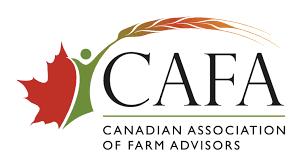

 2024 Agriculture Section (The Community Press, Weekly Review, Tofield Mercury, Lamont Leader) - April 3, 2024 - Page
2024 Agriculture Section (The Community Press, Weekly Review, Tofield Mercury, Lamont Leader) - April 3, 2024 - Page
Continued
Another way to provide water to the farm would be to use pipelines, she said.
“You can use a pasture pipeline from a nearby water source and can pipe to a water basin.”
She added the pipeline could be buried and it wouldn’t interfere with any cultivation.
The biggest thing for dugouts she said was proper design and location.
Beside using it for livestock, she said it could be used for watering trees and gardens and provide a form of fire suppression.
Orr-Langner said when choosing a location, look to an area where runoff from winter snow or heavy rainfall would drain in the dugout to keep it filled.
She suggested the size of the dugout should be capable of holding a fiveyear water supply because it must also take into account evaporation.
She told the crowded hall she felt most dugouts she saw were undersized.
She told the group Alberta Agriculture has maps which show suggested sizes for dugouts based on water requirements, as well as maps showing evaporation rates across the province.
A deeper dugout is more desirable than one spread over a larger area because it would reduce evaporation rates.
She also suggested what dugout side angles should be for maximum safety.
A stable slope also prevents some water loss in the dugout, she said.
A dugout could also be located near an existing water course, but she said a permit from Alberta Environment would be required to move water from the water course to the dugout.
Dugouts in poor locations could be located in a water course, or a groundwater fed dugout or spring fed dugout. It would also need approval from Alberta Environment.
Another thing to consider when locating a dugout, she said, was to avoid areas where the ground may be contaminated by chemicals or fertilizers that could then leach into the water.
Orr-Langner also touched on wells on a farm and some of the rules to consider when they are constructed.
“You do have to be sure where it is located that you’re not going to interfere with a neighbour’s well,” she said.
“You also have to be very careful when a well is built that you don’t over pump the water from it.”
Using the well longer than previous years, increasing the pump capacity to obtain more water are both situations where the well is being over pumped.
Water wells for livestock in a pasture, she said, did require a licence.










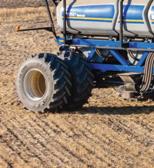





















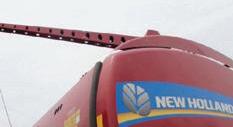






































The Alberta Farmer’s Advocate Office released an advisory recently warning farmers about “grey market” machinery finding its way to Canada.
“Grey Market” machines are those that are manufactured for use outside of North America.
“This equipment may find its way back to North America as used or lightly used equipment that is sold online, through auctions, or by private equipment dealers.”
The danger is that this machinery is not eligible for warranty work, and that service and repair parts are not available locally for these grey market machines, including software programs and even sometimes engines.
The Farmer’s Advocate office warns that even though the imported equipment may be a well-known brand, these items are manufactured and designed for use outside of Canada and the US.
“What you save on the purchase price may cost you more when you are unable to find
parts or repair your equipment.”
The Farmer’s Advocate says that Alberta dealers may assist potential buyers by checking the serial


number of the equipment, which should indicate whether the unit is in the North American system, and whether local service and repairs are available.
The Farmer’s Advocate office warns, “The Farm Implement and Dealership Act provides protection for producers who buy new equipment through a licensed dealer so implements

You have what it takes to run a farm. We have what it takes to get you started.
While other kids were riding two-wheelers, you were moving haybales with the John Deer . You’re a farmer. You’re ready for your own operation.
Ask about our no-fee, ultra-low interest Future of Farming mortgages and loans for young farmers.
Alliance Branch 780-879-3644
Daysland Branch 780-374-3951
Killam Branch 780-385-3731
Sedgewick Branch 780-384-3912
bought online, at auction, or out of province are not covered.”















Continued from page
presumably because our patients are indoors staying warm with their owners. Many years ago, the veterinary industry started to promote/celebrate Dental Month in February. We have expanded it over the winter because we have so many patients that need dental care and we need more than just February to fit everyone in! Our dental program is completely full for this year and ends April 30,” Allen said.
Hastings Lake Animal Hospital also offers a farm cat spay and neuter clinic, which is held annually in the fall.
“I started the farm cat spay and neuter program in about 2009. When my children were students at Ministik Elementary, we all knew that there were many
unwanted kittens and cats in our rural community. We were brainstorming fundraisers to raise money for student programming at the schoolso I suggested this wild and crazy idea...which people loved!” Allen said.
“Statistics at that time showed that a surprising percentage of surrendered cats and litters were coming from rural communities like ours. So, I decided to start the Ministik Farm Cat Spay & Neuter Program which was a one-day event where the cats were dropped off at the Ministik School gymnasium and driven by parent volunteers to my practice in the city. It was a by-donation program and we have spayed and neutered hundreds of cats since starting this program which we run
every year,” Allen said.
One of Allen’s fond memories in the beginnings of the program included a generous farmer who wanted to support the student programming at the school.
“There was this crusty old rancher who came in with an equally crusty old tomcat and he donated $200 to the kids to neuter this cat! I guarantee you he would have never paid a veterinarian a single cent to neuter that cat but he wanted to support the kids, so the tomcat was wrangled up and presented to the kids,” Allen said.
At the beginning, the students had a great learning experience with helping out with the program, and Allen said they were very involved with the whole process, from admission and surgery, to recovery and
discharge.
“I was always so proud of the kids because they really got the message that we do not need any more litters of kittens in our community, and that cats should be spayed and neutered at six months of age. The closure of the Ministik School led to the program morphing in the Farm Cat Spay and Neuter Program that we now offer on site at Hastings Lake Animal Hospital. All the proceeds from the spay and neuter program used to go to The Ministik School Parents’ Association, a couple years to the Ardrossan Band Parents Association, and now all the proceeds go to our Hastings Lake Animal Hospital Rescue,” she said.
Allen says that it is important to neuter male
cats early in life, when undesirable behaviours have not yet begun.
“In order to prevent undesirable male cat behaviours, it’s really important to neuter them before they start the behaviours (spraying urine, wandering, fighting), we recommend neutering at five and a half months of age now. Neutering a male at any age will improve the undesirable tomcat behaviours but may not extinguish the behaviour,” she said.
This clinic has been so popular, Allen said they can never serve all the clients that apply each year.
“Our clients get first dibs on the slots and then it opens up to the general public. We have served hundreds of clients over the years, many who are annual
supporters who spay or neuter cats that show up on their properties,” Allen said.
As for her veterinary work as a whole, Allen says she rarely has a day where it feels like she’s working.
“I’ve been doing this a long time; I love what I do. I’m surrounded by a team of highly skilled and supportive women, and one man, who make it all possible. We all live in the community and absolutely love helping our neighbours, friends, and families keep their pets healthy and safe. It’s really been an honour to be able to work right in my community.
Everyone has been super supportive of the practice and I am extremely grateful to each and every one of my clients,” she said.



























While government officials in the Niagra region have declared a state of emergency ahead of the full solar eclipse expected on Monday, April 8, residents of Central Alberta will only see a partial eclipse of the sun that day.
While Niagra Falls has been pinpointed as one of the best places of the world to watch the solar eclipse, as it is located in the path of totality, most places in Alberta will see a partial eclipse, as the moon passes over the lower part of the sun, starting just before noon that day, and lasting until about 1:45 p.m. The point where the impact will be the largest will be seen closest to 12:40 p.m.,
when the moon will cover the lower left quarter of the sun, about 23-4 per cent in total.
Southern areas of the Province will see the highest percentage of coverage.
Even with a partial eclipse, it is not safe to look at the sun without certified eye protection.
That means specially manufactured solar viewing glasses, with ISO 12312-2 certification, or at the very least, pinhole projection.
Pinhole projection involves poking a small hole in a material, like cardboard, that is completely opaque, then putting a piece of paper underneath the light coming through the hole.
To ensure that the hole
has no debris, cut out a square, and cover that square with aluminum foil, then poke a small hole in the foil.
The light coming through the tiny hole will reflect the image of the moon moving in front of the sun in an indirect way that is safe to view.
The further the paper is away from the cardboard, the larger the image on the paper will be. Do not look through the pinhole at the sun.
Note that direct viewing using telescopes, binoculars, or cameras does not provide protection against eye damage, unless they are equipped with proper solar filters.
Sunglasses do not provide the necessary protection.
“Looking at the sun on any given day, whether it be an eclipse day or not, is very dangerous. People have become totally blinded by that.
“You don’t want an eclipse to be the last thing you ever see,” Frank Florian, senior manager of planetarium space sciences at the popular Edmonton science centre told the Edmonton Journal.
Partial eclipses offer the most danger for viewers, when the moon doesn’t fully cover the sun.
Alberta will see a full solar eclipse on Aug. 22, 2044, a once-in-400-years event. Until then, there will be eight more partial eclipses, starting August
2026.
Of course, any solar event requires a clear sky to view. According to The
Weather Network, the 14day forecast including Monday, April 8, calls for mainly sunny skies.



















































Rural municipalities are “cautiously optimistic” that a provincial police service would enhance rural safety, a news item on their association website says.
But members of the Rural Municipalities of Alberta are disappointed they weren’t consulted in the lead-up to the government’s first reading of Bill 11 on March 13, the association for 69 counties and municipal districts said.
The RMA said loose ends remain about how a provincial police service would jive with the RCMP in Alberta’s countryside. The group singled out a lack of clarity on issues like collaboration, the development of community safety plans, the gathering of community input and the implementation of priorities.
“If supported by proper governance and local input, enhanced police capacity is beneficial to rural communities,” says the RMA item, “but there are risks around having two different entities providing similar services within the same community.”
Less enthusiastic is Alberta Municipalities, which speaks for municipalities other than MDs and counties – big cities down to summer villages. It says that the way Bill 11 came into being is symptomatic of a non-consultive approach.
The province has “a tendency to avoid consultation and engagement,” says an ABmunis new release. “We ask that ABmunis be informed and consulted from this point onwards on this vitally important issue. Much greater collaboration between the two orders of government is needed.”
The organization supports efforts to make life safer and more secure for Albertans, the release says. But it needs to know more about things like costs, governance and any new policing agency’s mandate.
Opposition Leader Rachel Notley, meanwhile, slammed the UCP government for pursuing what she calls an expensive and unpopular provincial agency.
“Another day, another broken promise,” Notley said March 14, reacting to the successful first reading the day before of the Public Safety Statutes Amendment
Act, 2024
“Before the election, the premier promised she would not pursue a provincial police force. During the election, the premier promised she wouldn’t pursue a provincial police force.
After the election, the premier promised she would not pursue a provincial police force,” said Notley, the member for EdmontonStrathcona.
“Yet, Mr. Speaker, yesterday the premier’s government tabled legislation to –wait for it – pursue a provincial police force.”
Premier Danielle Smith maintained that the opposition has got it all wrong. The bill is about complementing existing police services and giving Alberta’s sheriffs arms-length governance and civilian oversight, she said.
“We want to govern and regulate them in exactly the same way as the Calgary Police Service, the Edmonton Police Service, the RCMP, with that kind of oversight,” said Smith, the member for Brooks-Medicine Hat. “That is going to augment safety. It’s going to augment our services.”
The premier maintained that issues addressed in the bill are ones her party ran on, and she accused the NDP of wanting to defund police.
“On this side of the chamber we want to give enhanced coverage for the police and enhanced coverage for policing in communities, and that is exactly what we’ve done,” said Smith.
Irfan Sabir, the official opposition’s deputy house leader, said municipalities, unions and Albertans don’t want a new police service. “So why has this government broken its promise and introduced an Alberta police force which no one is asking for?” he said.
The UCP is “ignoring the will of the people and introducing another pet project of the Premier,” said Sabir, the member for CalgaryBhullar-McCall.
Deputy Premier Mike Ellis said the NDP is out of touch. “I can tell you that policing comes up all the time. It doesn’t matter if we’re talking about large cities, mid-size municipalities, RMA: they sit there and say that we need law enforcement. That’s why we have unprecedented support.”
Ellis, the member for Calgary-West, added: “I suggest the members opposite try to disconnect themselves in some way from the unions and actually speak to the boots on the ground. When you talk to the actual sheriffs, when you talk to the people in the community, I can tell you that they want police.”
Ellis, who is also the minister of public safety and emergency services, continued: “I, quite frankly, don’t care what the uniform is. When somebody calls 9-1-1, we’re going to make sure an officer shows up, regardless of what the members opposite say.”
According to the website Keep Alberta RCMP, transitioning to a policing model with no RCMP contracts would cost Alberta $371.5 million. Total ongoing annual costs would rise from $595 million shared by the province, municipalities, and Ottawa to $759 million shared by only the province and municipalities, says the site.
Keep Alberta RCMP is a campaign run by the National Police Federation, the union for about 20,000 RCMP members. Based on earlier policing ideas floated by the government, the site estimates the total number of actual police officers and staff in Alberta would drop slightly to under 5,000.
The Court and Prisoner Service was renamed Alberta Sheriffs in the early
2000s and expanded into a new area of service called Sheriff Traffic Operations, the forerunner of today’s Sheriff Highway Patrol, press secretary Aurthur Green of the Ministry of Public Safety and Emergency Services told the Local Journalism Initiative in an emailed statement.
Alberta Sheriffs are responsible for courthouse security and prisoner transport, traffic and commercial vehicle enforcement on provincial highways, and conservation law enforcement for Fish and Wildlife Services. Sheriffs also provide personal protection for senior provincial government officials, as well as security at the legislature and other provincial facilities, Green said.
One way rural Albertans benefit is through surveillance of criminal targets provided by the Sheriff Investigative Support Unit. SISU does the work in support of the RCMP and Alberta Law Enforcement Teams, or ALERT.
Also under the sheriff umbrella is the Safer Communities and Neighbourhoods unit. SCAN, as it's called, uses legal sanctions and court orders to hold owners responsible for illegal activities on their properties.
About 1,160 positions make up the Alberta Sheriffs, and about 1,000 of those are peace officers, Green said.
CANOLA: UA CountyGold
(O.P. conventional & Argentine Variety) Non-GMO, suitable for organic trade
FLAX: CDC Plava
BARLEY: AAC Connect
PEAS
OATS:
Ph: 780-754-2121
Fax: 780-754-2239
Email:




Wheat:
CWRS - AAC Brandon - Improved Rated MR for FHB resistance
- Most widely grown CWRS variety in Western Canada for 5 years
CWRS - AAC Wheatland VB
-Wheat Midge tolerant
- Very good lodging resistance
CWSWS - AC Andrew - Great silage option
-In demand by milling and ethanol industries
Yellow Peas:
CDC Canary - Improved standability -Early maturity
-Higher Yielding
Faba Beans:
CDC 219-16 - Zero Tannin
- Seed is smaller than Snowbird, larger than CDC Snowdrop
6-Row Feed Barley:
AB Advantage - Improved plump and bushel weight
- Smooth awned
-High grain and forage yield
2-Row Malt Barley:
CDC Copeland - Strong demand by malting companies
















































































































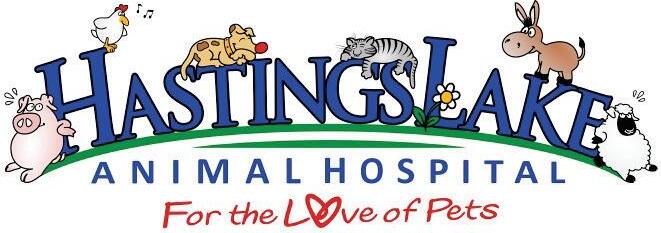






Earlier this month Canada Safety Council (CSC) acknowledged the week of March 14-20 as National Farm Safety Week and chose to focus their attention on awareness of farm rollovers and runovers, due to the fact that most commonly, fatal injuries on the farm are machine-related.
“The most common causes of fatal injuries on the farm are machine-related (66 per cent), with nearly 30 per cent of these being due to machine rollovers and runovers,” the media release said.
In the most recent study conducted by the Canadian Agricultural Injury Reporting (CAIR), it was determined that in the last 10 years, 91 people died on the farm in machine related rollover
incidents, and 90 died in runover fatalities.
“Over the 10-year period from 2011 to 2020, there were 91 machinerelated rollover fatalities. (In that same time frame,) there were 90 agriculturerelated runover fatalities,” the report said.
The CSC says that among the numerous industries in Canada, the agricultural industry is one of the most dangerous.
“The agricultural industry is among the most hazardous ones in Canada from the perspective of raw fatalities. As a profession and a calling, farming offers a unique look at risk — rather than being something to avoid, it’s an attitude and culture which is baked into the job and an accepted fact of life,” their media release said.
The CSC defines a rollover as when a piece
of heavy equipment tips onto its side or roof, and a runover occurring when a machine under power or rolling on an incline runs over the victim.
“Most rollover fatalities in Canada involve tractors, While many rollovers lack documentation to determine the direction in which the vehicle rolled, almost half of known rollover fatalities occurred when the machine rolled on its side.
“Runovers occur most frequently with unmanned vehicles. This is most often seen when a machine is left running or unblocked on a slope. It is also a common occurrence for bystanders to be victimized by runovers — the operator does not expect them to be in the area — and for operators to fall off the machine and fall under the wheels. Notably, bystander fatal-
ities tend to disproportionately include children between one and four years of age,” said the release from the CSC.
To prevent such tragic events from happening, the CSC suggests that machine operators should avoid driving too closely to edges that have a steep drop off, saying these conditions are the most immediate known causes of rollovers.
“When traveling on an incline, use the shallowest slope available. Follow the vehicle manufacturer’s recommendation on what an acceptable slope is and avoid traveling on a diagonal. Install a Roll-Over Protection Structure on your tractor. These are roll bars or cages that are designed to create a protective zone around the operator in case of rollover,” the CSC release says.

As for runovers, the CSC says that children should be supervised closely and kept away from running machinery.
“Never stand in the direct path of a running tractor, even if it is not actively in motion. Always block off machines that are not currently in use to eliminate the risk of it rolling of its own accord,” says the CSC release.
“From 2011 to 2020, alighted operator runovers (unmanned machines) were the most frequent type of fatal runover (35 per cent). In this kind of injury event, the victim is runover by a vehicle they had left running or unblocked on a slope. Bystander runovers were the secondlargest percentage of runover fatalities (24 per cent), followed by fallen operator runovers (21 per cent), and passenger/extra
rider runovers (17 per cent),” says the report from CAIR.
The CSC suggests that the question to be asked in any given situation should switch from weighing the risks when life could hang in the balance, and instead thinking about the safest way to perform tasks.
“Safety on the farm is so often about weighing the risks and determining which are risks worth taking — the risk, for example, of whether it will rain enough to make a certain crop viable, is one many agricultural workers deem worth the reward. However, where lives enter the equation, the thought process must switch away from, “Is this a risk worth taking?” and move toward “How can I do this in the safest way possible?”


There are about 25,000 water licences in Alberta. The province now has an easy-to-use digital system that lets users report on water use and manage their licence through a confidential online tool.
However, many water licences issued before November 2021 still report in using older electronic and paperbased systems that are slow and hard to track.
The Alberta government is asking all Albertans with water licences issued before November 2021 to move them into the online system by the end of this year.
This will help licence holders save time and help the province understand how much water is available during a severe drought.
Alberta’s Digital
Regulatory Assurance System is a secure and 100 per cent confidential online platform. It helps licence holders submit reports, apply for renewals or amendments, receive email reminders and track their status.
https://www.alberta.ca/digital-regulatory-assurancesystem


















Canada's official drought monitor calls the current dry period on parts of the prairies "extreme" or "exceptional." The parched fields and drained reservoirs characteristic of recent, abnormally warm seasons in southern Alberta may also be a glimpse into the region's future, researchers say.
"This period right now of low water in Alberta was completely anticipated," said Dr. Tricia Stadnyk, Tier II Canada Research Chair in hydrologic modelling and a professor in Civil Engineering at the Schulich School of Engineering.
"The modelling that we've done globally with these climate models shows that Alberta is one of only three major hotspots in the world where we actually have confidence that we're going to have more frequent drought,"
For a study now published in Nature's Climate and Atmospheric Science journal, Stadnyk and masters student Michael Vieira combined various climate models from international bodies like the Intergovernmental Panel on Climate Change to produce projections of temperature and precipitation around the world.
Any one representation of future climates isn't nec-
essarily accurate, Stadnyk explained, "but if you put them all together, then they paint a picture of what it could look like. And because there's so many of these simulations, if you get agreement among them, then it's a pretty strong indicator of what's going to happen in the future."
In the picture produced by these sympathetic models, the Canadian prairies and parts of North and South Africa emerged as regions likely to experience more severe and long-lasting droughts.
Alberta livestock producers received $165 million in aid last year through the AgriRecovery initiative following months of devastating drought. Originally conceived of as a once in fifteen year disaster relief program, 2023 was the second time in three years the province turned to AgriRecovery to help farmers and ranchers recover.
As Alberta's government has rolled out drought response plans in anticipation of another dry year ahead, Minister of Environment and Protected Areas Rebecca Schulz has repeatedly emphasized how the El Niño global weather pattern is causing diminished rain and snow and increased temperatures.
“We've had El Niño events in the past," she said. "What has caught climate scientists and anyone in the water resources world off guard is how far above any other historic El Niño event this year is.”








































As of March 1, fire season is officially underway in the Alberta. But rural municipalities say they're still waiting on millions in provincial support payments to help cover costs incurred responding to 2023's disastrous wildfires.
In total, last year's wildfires cost rural municipalities an estimated $78.5 million, according to a survey conducted by the Rural Municipalities of Alberta (RMA). Communities surveyed said they had requested more than $60 million in provincial support through the Disaster Recovery Program, which provides financial assistance for uninsured losses caused by emergencies and natural disasters. Nearly half of respondents had yet to receive any of the funds requested, and none had received the full amount.
Because municipal governments can't run deficits, the emergency expenses largely are drawn from financial reserves, said RMA president Paul McLauchlin. Delays in repayment from the DRP can cause future cash flow issues, or mean funds have to be diverted from other areas of the budget.
The average amount incurred in damages or recovery efforts by rural municipalities that responded to the survey was $2.7 million.
"That's quite a bit of money that really is not available to municipalities for all the other goods and services we provide the folks in rural Alberta," McLauchlin said.
"Because we're talking about some fairly large numbers, I have the expectation that a majority of municipalities likely had to go and draw down their reserves. And those reserves actually aren't intended for forest fires. Those are ultimately intended to provide capital replacement in our municipalities."
It can sometimes take up to two or three years
for municipalities to be reimbursed through Alberta's disaster recovery program, and there is no guarantee those costs will be fully covered. As climate change makes wildfires more frequent and intense, McLauchlin said he worries municipalities won't be able to handle the financial burden if they are hit with back-toback disasters.
"We can't predict the future. But if you did have a situation where you had three years like this in a row, if the payment is not quick, that would be such an extreme financial burden that I expect some municipalities may not have the resources available, considering the numbers that we're talking about," he said.
To date, $23.1 million
has been disbursed to communities through the 2023 Wildfire Disaster Recovery Program, and the government is committed to making sure communities are reimbursed for eligible costs, said Arthur Green, press secretary for Alberta's Minister of Public Safety and Emergency Services.
"Assessing claims is an ongoing process, and we aim to process submissions as quickly as possible. Some claims take longer to process if more information is required from communities. Communities have a dedicated case manager assigned to their file and are available to answer questions on the status of their application," Green said.
"The Alberta Emergency Management

Agency (AEMA) is working with local authorities and our cross-ministry partners to get ready for the upcoming fire season and ensure a well-coordinated and efficient response. AEMA is coordinating a thirdparty review of the 2023 wildfire response efforts to identify potential improvements to the emergency management system."
McLauchlin said the purpose of RMA's report isn't to be critical, but to be a learning exercise and to work toward needed policy changes.
"I think this is entirely fixable," he said. "Our purpose is to bring this to the attention of government, look for ways to streamline it, eliminate red tape, and create certainty in the system."
A major reason for the delays in disaster recovery payments to municipalities, McLauchlin said, is that "funding becomes part the federal-provincial blame game with one another." While governments argue over who is responsible for what costs, the money "gets tied up in the bureaucracy of that relationship. And then just gets tied up


in the bureaucracy with the provincial government."
"We want to create surety in the system," McLaughlin said.
"In emergency response situations, you don't want to be sitting there making budget decisions. You want to make response decisions."


